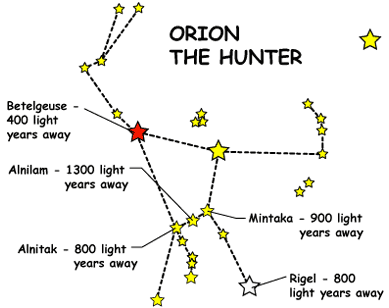Make a Model of the Night Sky
Just as we use maps to find your way around an unfamiliar city or town. We will use a star map to find our way around the night sky! Below are instructions to make a model of the night sky to help your children identify and locate the stars and constellations.
How many stars can we see at night? Well, answers on the internet vary widely–there are estimates from 2,000 to 10,000 stars. Regardless of how many we can see, how do we identify the stars that are visible in the night sky?
Star maps are especially important because the constellations are not in the same location every night. This is because the Earth rotates and revolves around the Sun, and the stars also move slightly.
It’s fun to gaze at the stars on a clear night, hoping to see a “shooting star” or trying to join the stars with imaginary lines to make patterns.
People have been star gazing and studying the stars for thousands of years. Ancient tablets and carvings show how early astronomers tried to map out the movement of the stars and make predictions about the stars and planets.
During these ancient times, humans created patterns to help locate and remember specific stars. These constellations are dot-to-dot pictures in the night sky with stars as the dots and imaginary lines to join the “dots” to make patterns. The word stella is the Latin word for stars. There are 88 constellations but billions of more stars.
Pictured here is the constellation Orion. The white “dots” and sunburst shapes are stars. The sunburst shapes represent the larger stars in the constellation Orion. The lines that join the stars do not exist. The lines help form pictures which help us remember the names and locations of stars.
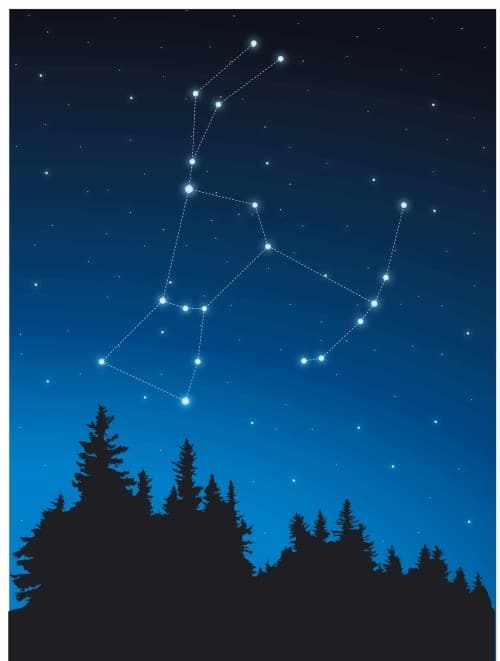
Here is a photo of Orion with names of stars in the constellation. Plus, you can see just how far these stars are from Earth.
Can you imagine this picture of Orion without the lines? It would be a group of stars that appear to be close together. The constellations’ stars look very close to Earth, but they are not.
The Changing Sky
The stars appear to move in the sky. This is due to the Earth’s rotation on its axis and its orbit around the Sun. There is a star chart for every month.
Before making the umbrella star chart, spend an evening star gazing in your own area and find the location of some of the major constellations. View and print the current star map for your area on SkyMaps.com.
Make a Model of the Night Sky
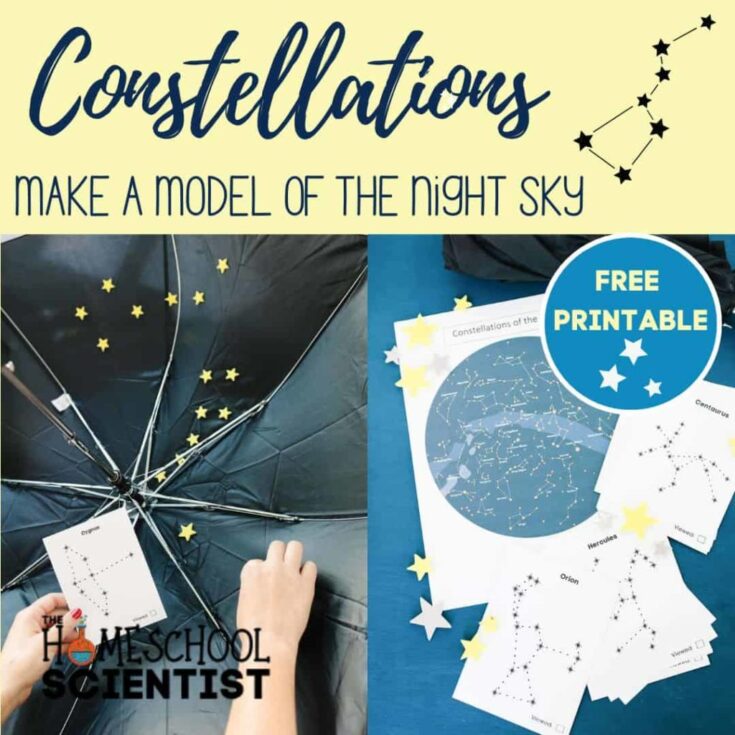
Make a model of the night sky to help your children learn the names and locations of major stars and constellations. Using stickers and an umbrella, this activity is engaging and easy-to-do. Includes a free download of constellation cards and mini-posters.
Materials
- Umbrella - The larger the better, but a compact umbrella works just fine!
- Star stickers. We used larger foam stickers. The foil stickers from the dollar store are difficult to work with.
- The printable constellation cards and night sky map that come with this lesson. You may opt to use your own stars field guide.
Instructions
- Print the worksheets packet we have listed on this post as a guide for learning the constellations. Skymaps.com has printable sky maps for the Northern Hemisphere, equatorial areas, and the Southern Hemisphere. These are free to download and print.
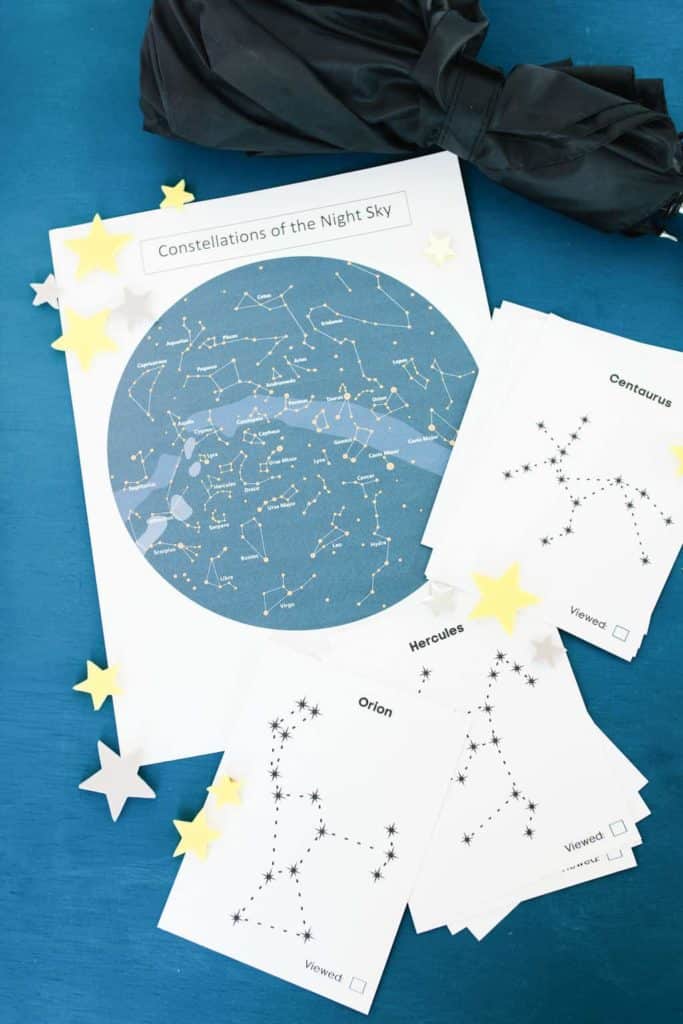
- Open the umbrella. The underside will be the "night sky." Use the Skymap.com map to orient your "night sky."
- The center of the umbrella will be Polaris, also called the North Star. Polaris is used to find true North. Polaris is in the constellation ursa minor.
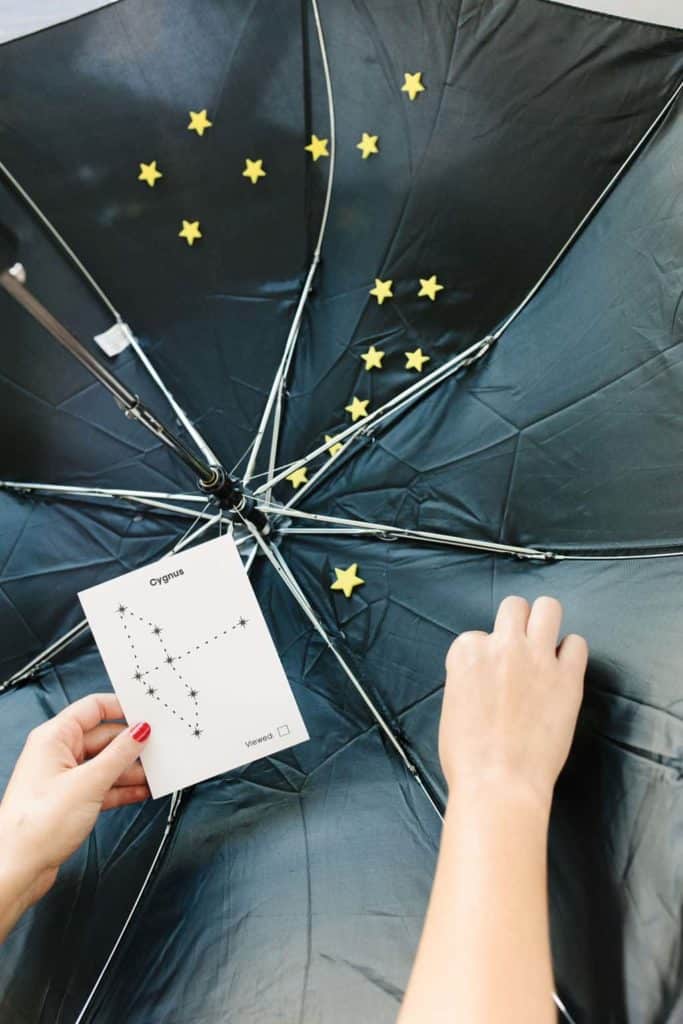
- Place a sticker right next to the center of the umbrella to represent Polaris
- Next, finish making the little dipper constellation. Polaris is the brightest star in the constellation. Use this photo as a guide. The bright star on the photo is the center of the umbrella.
- Using the star map and the printout cards in our printable packet, make some of the other constellations on the "night sky."
- Take the umbrella outside on a clear night, can you match up the umbrella "night sky" with the night sky over head?

- Notice how in the actual night sky, the constellations seem to move throughout the night and throughout the days, weeks, and months? This is because the Earth does rotate and it orbits the Sun once a year. In addition, the stars do move some too. To help simulate this, hold the umbrella over your child's head, then turn the umbrella counter-clockwise. This helps simulate the movement of the constellations from our vantage point on Earth. If you are working with older students in middle or high school, this makes a great research project for them!
Request our free printable that goes with this activity. The request box is below.
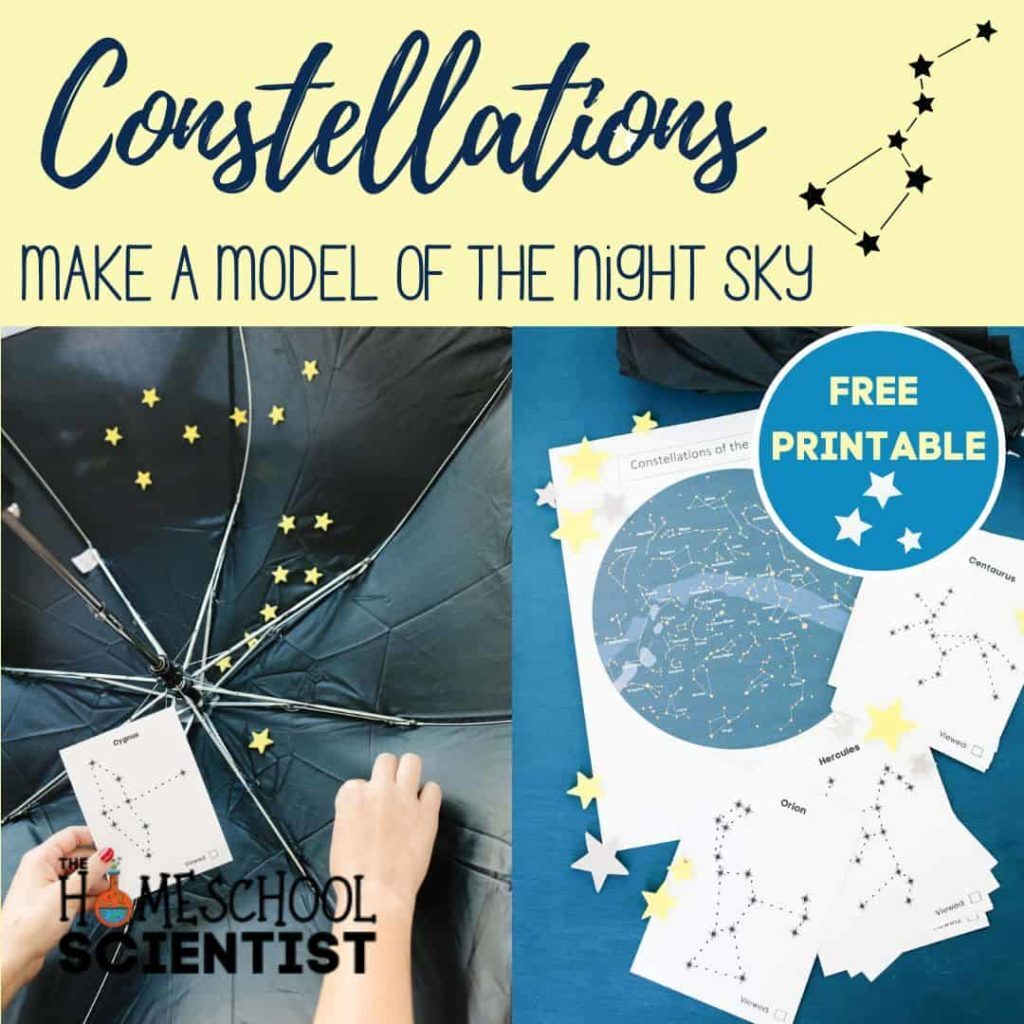
You will be added to our email list and will be the first to know when a new resource is available.
Also, keep reading below the sign up box for additional resources on our site.
Also, you might want to pair this with our Get to Know the Planets (50+ page lesson and worksheets.)
Try the following activity to learn the location of specific stars and constellations. We will also demonstrate why the stars seem to move across the night sky.
If you want to also use an astronomy app, here are 12 apps to consider.
You just need a few household materials to make a thermometer with your kids and show them the science behind how a thermometer works. How to Make a Thermometer
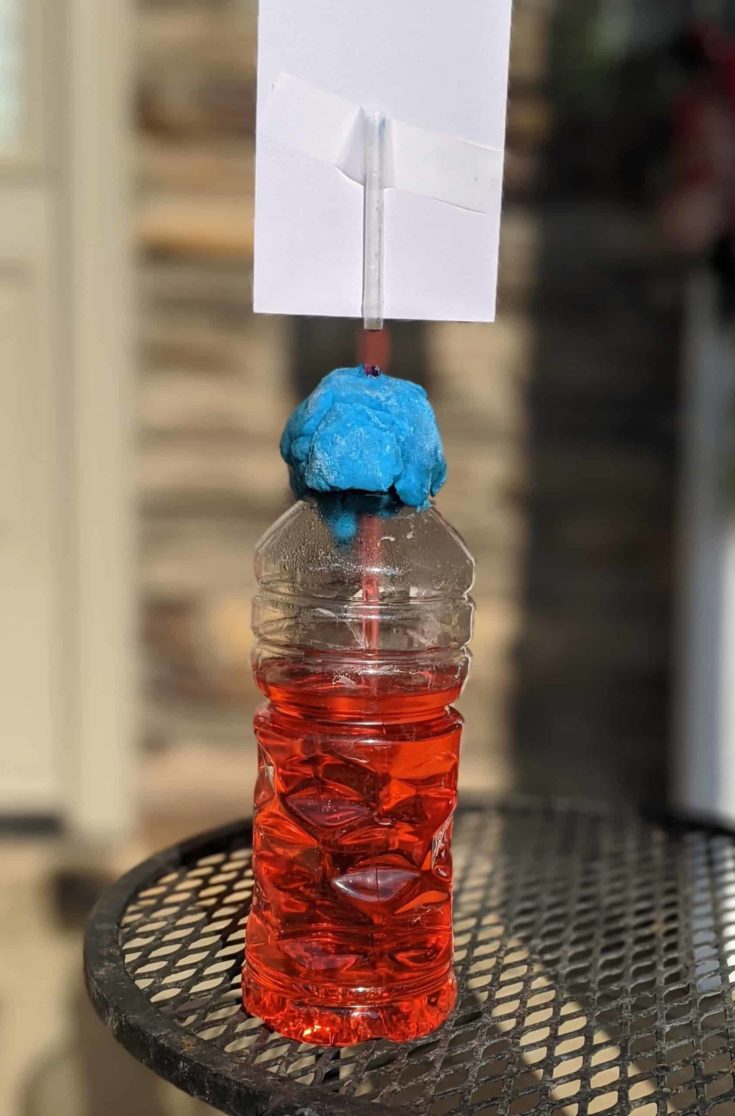
Included in the printable packet with this activity are 16 constellation cards. Print them on card stock or print out on regular paper and put a check in the checkbox as your children find the constellation in the night sky.
If you are using this with older children and are doing an astronomy unit, you can use the cards as a “quiz.”
Also included in the printable pack are 8.5″ x 11″ mini-posters of five constellations that can be used for a painting activity with younger children.
Other Resources:
Below are books and other activities related to space.
These are our favorite constellation books we have used for years.
Check out these posts:
Get to Know the Planets lesson with printable
Use the sign-up box below to request the printables that go with this Make a Model of the Night Sky activity.
Input your email below, and we’ll send you the printable pack that goes with the pipe cleaner constellations activity.
You will be added to our email list and will be the first to know when a new resource is available.
Also, keep reading below the sign up box for additional resources on our site.
I hold a master’s degree in child development and early education and am working on a post-baccalaureate in biology. I spent 15 years working for a biotechnology company developing IT systems in DNA testing laboratories across the US. I taught K4 in a private school, homeschooled my children, and have taught on the mission field in southern Asia. For 4 years, I served on our state’s FIRST Lego League tournament Board and served as the Judging Director. I own thehomeschoolscientist and also write a regular science column for Homeschooling Today Magazine. You’ll also find my writings on the CTCMath blog. Through this site, I have authored over 50 math and science resources.



